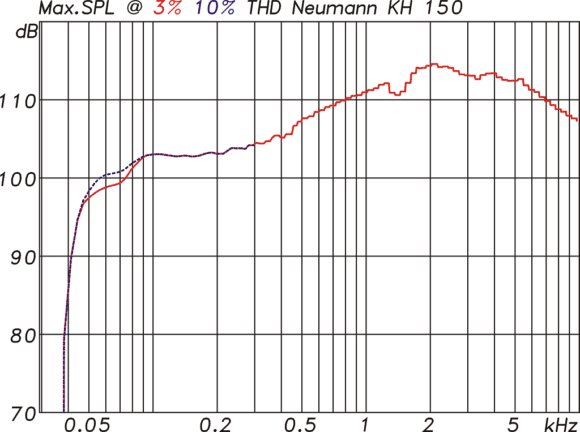If you used a specific calculation to arrive at +13 dB, would be great to get more details on that.
My guess is that you're just saying that a "good" sub will already have a 110 dB SPL, thus it takes over (no calculations needed). But essentially, there is nothing "additive." I.e., if a speaker is producing 97 dB in that lower frequency range, adding 110 dB would only result in a 110.2 dB (extra 0.2 dB), thus the sub simply replaces the SPL in that range, but the speaker adds nothing perceptible (0.2 dB could be ignored altogether). In fact, even that +0.2 dB would not be produced because we're crossing over and preventing the speaker from producing any frequencies under 100 Hz. That is, it's equivalent to either having a sub or not having it and nothing more. If that's correct, there might be a misconception among some audiophiles here based on the comments about how much of an effect a sub really has on the total SPL of the system. I think adding a sub for classical music could make some difference only for certain works, but almost no difference for many of them. This probably also explains why I heard very little difference between the tower and bookshelf versions of the B&W at the store when I tested three classical pieces (one was piano solo, two orchestral).
A sub could make more of a difference for certain instruments, such as an organ (some go below 20Hz it seems). But unless it's a solo instrument, or an orchestral composition with heavy emphasis on the lowest notes, these would not make up much of the music both in terms of duration and the ratio of their presence in the music compared to other instruments at any one time. Contrabassoon, double bass, and even the harp can reach under 50Hz, but that's only for the
lowest notes. A sub can add an extra enjoyment perhaps for the right piece (maybe Bach's cello suites or the organ works), but it doesn't seem like much of the SPL would be affected on average. Therefore, SPL should not be a reason for adding a sub. In some cases, like for solo violin works, seems like the sub will make no difference at all since the lowest note on the violin starts at 196 Hz.
Now for rock or heavy metal, a sub could perhaps make a big difference. But at the same time, for these types of music, a low distortion system might not be as critical since it's much harder to hear any distortion in that music.

